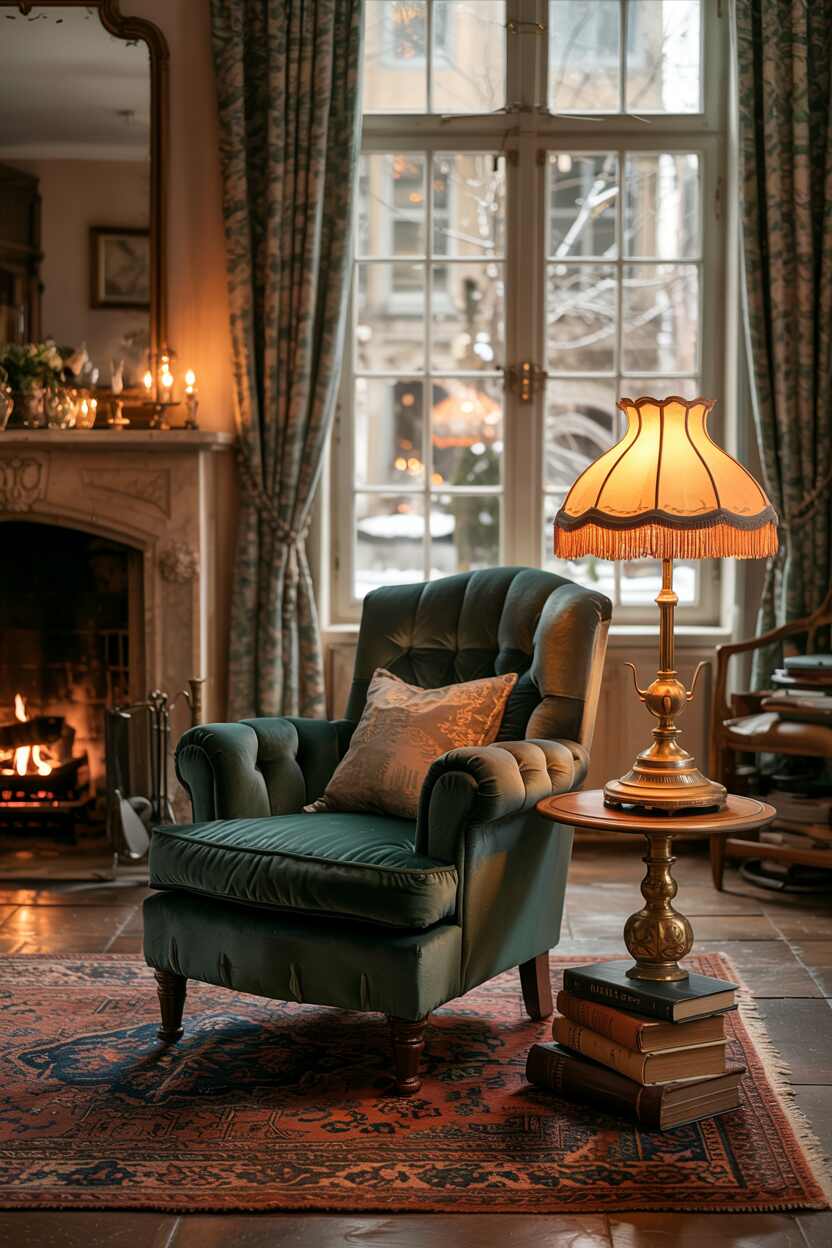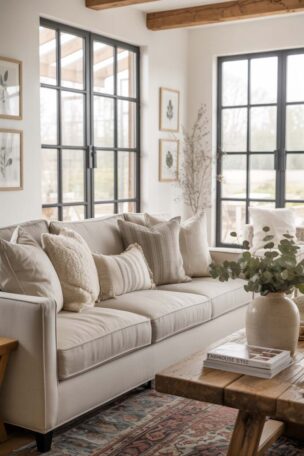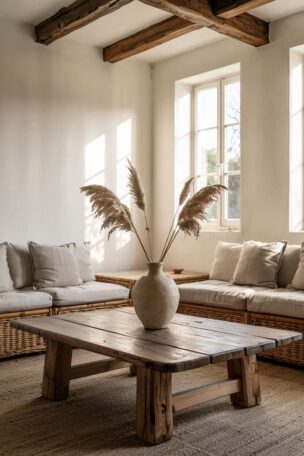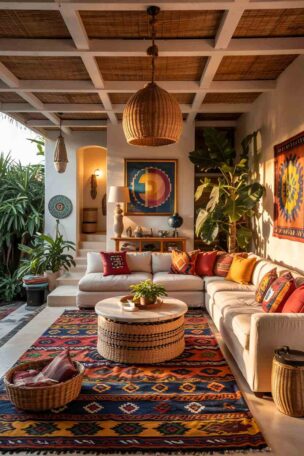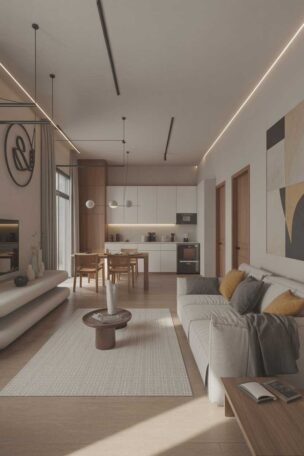Vintage interior design brings the charm and beauty of past eras into modern homes.
For those wondering what is vintage interior design style, it is a decorative approach that celebrates the unique character of bygone times, from the early 20th century through the 1980s, creating spaces rich with history and personality.
Unlike passing trends, vintage style offers lasting appeal through its focus on quality craftsmanship, distinctive details, and nostalgic warmth, making spaces feel truly loved.
What Defines Vintage Interior Design?
Time Periods and Influences
Vintage design draws from various historical periods, each with unique characteristics that can be mixed and matched to create personal, eclectic spaces.
This style often references eras from Victorian times through the late 20th century, with many designers focusing on mid-century aesthetics from the 1940s through the 1970s.
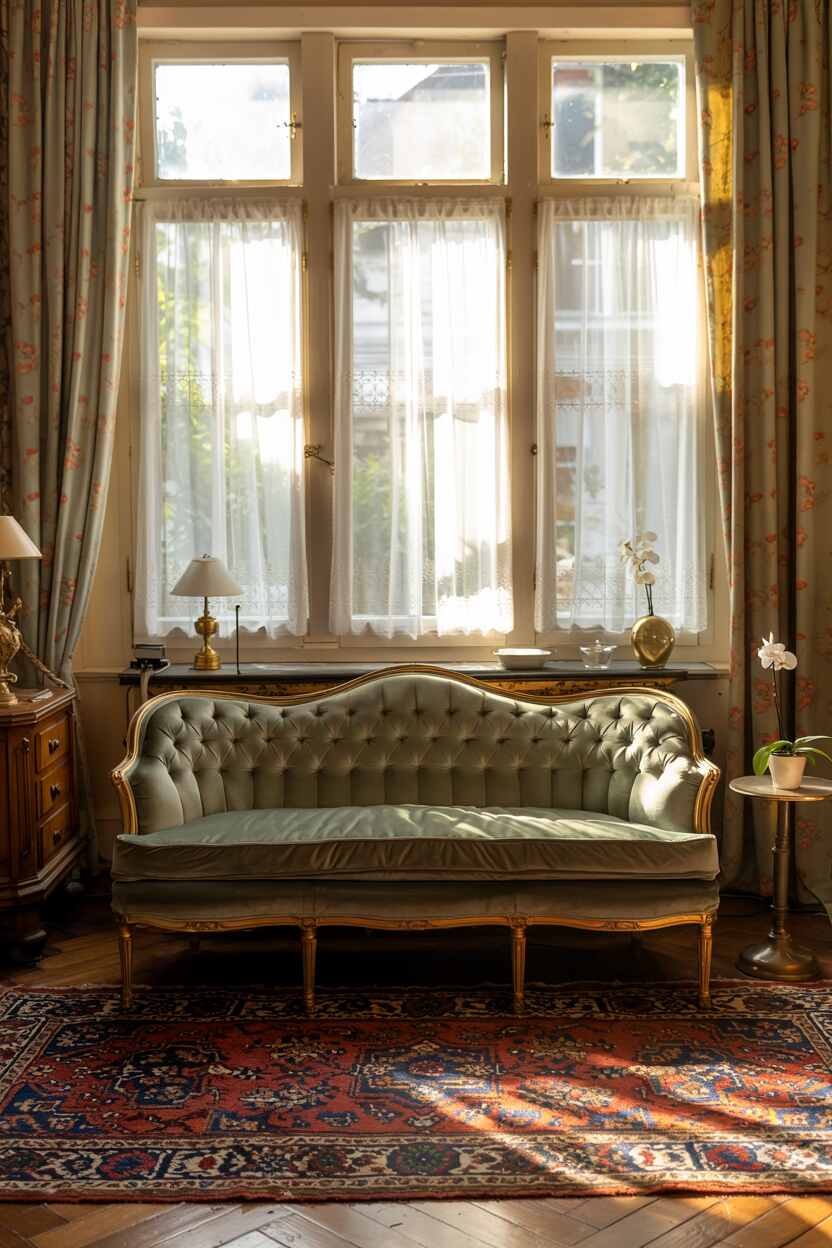
What makes vintage style special is how it borrows distinct elements from different decades:
- Victorian (late 19th century): Ornate details, dark woods, and rich textiles
- Art Deco (1920s-30s): Bold geometric patterns and glamorous materials
- Mid-Century Modern (1940s-60s): Clean lines, organic forms, and mixed materials
- Retro (1960s-70s): Bold colors, fun patterns, and experimental forms
- Early Vintage (1980s): Warm colors and country-inspired details
Each era contributes its color schemes, silhouettes, and decorative details to the vintage design vocabulary.
Core Philosophy
At its heart, vintage interior design honors craftsmanship and character.
This style values items with history, stories, and signs of gentle aging that modern mass-produced pieces often lack.
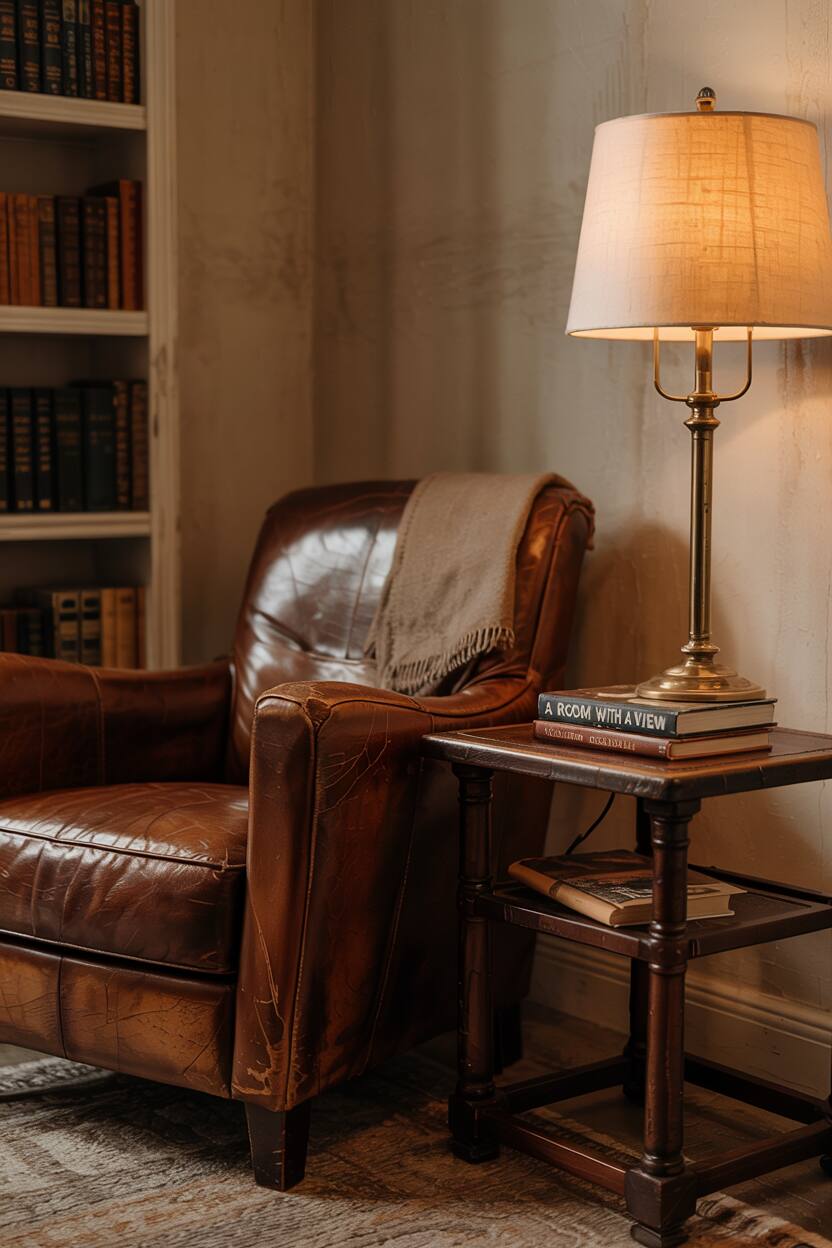
The vintage approach celebrates:
- Quality materials that gain beauty with age
- Handmade or artisanal items with visible craftsmanship
- One-of-a-kind finds that add distinct personality to spaces
- The charm of slight imperfections and patina
True vintage interiors balance old with new, creating spaces that feel collected over time rather than purchased all at once.
This mindful mix keeps rooms feeling fresh and livable rather than like museum displays.
Key Elements of Vintage Style
Furniture Characteristics
Vintage furniture often shows superior construction compared to many modern pieces, with solid wood frames, dovetail joints, and other signs of quality craftsmanship.
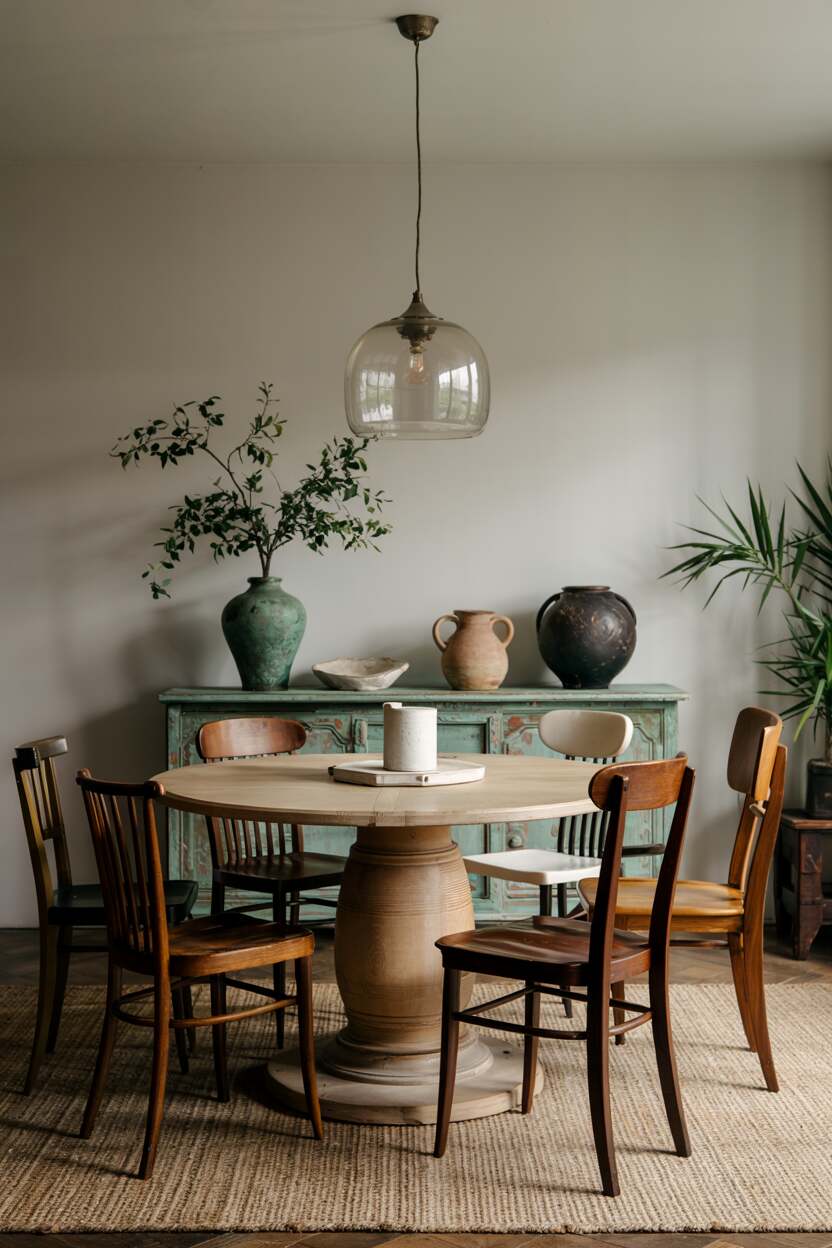
Look for these distinctive features in vintage furniture:
- Solid woods like mahogany, oak, or walnut with natural grain patterns
- Carved details, spindle work, or inlaid designs
- Upholstery in rich fabrics like velvet, brocade, or textured weaves
- Traditional joinery methods showing careful construction
- Classic silhouettes specific to their era
Many vintage pieces were built to last generations, which explains why so many survive today as beautiful, functional items for contemporary homes.
Color Palettes
Vintage color schemes vary widely depending on the era being referenced, but they commonly include softer, slightly muted versions of colors popular in their time.
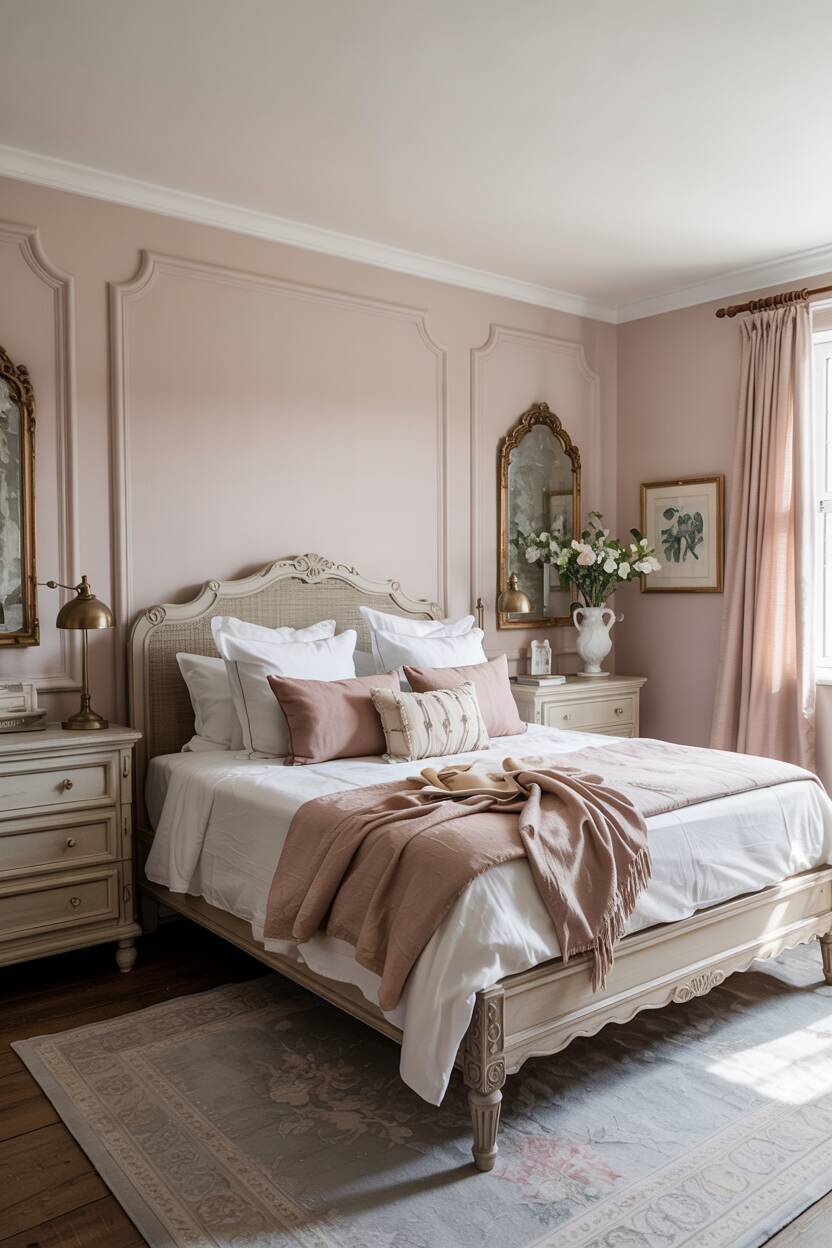
Common vintage color palettes include:
- Victorian: Deep burgundies, forest greens, navy blues, and rich golds
- Art Deco: Black and white with bold accent colors like jade green or coral
- Mid-Century: Warm oranges, olive greens, mustard yellows, and teal blues
- 1970s: Earth tones like brown, rust, gold, and avocado green
- 1980s Early Vintage: Mauve, dusty blue, sage green, and cream
These colors often appear slightly faded or softened compared to their original brightness, creating the lived-in quality that makes vintage spaces feel so comfortable.
Patterns and Textiles
Textiles play a major role in vintage design, adding warmth and visual interest through distinctive patterns and rich textures.
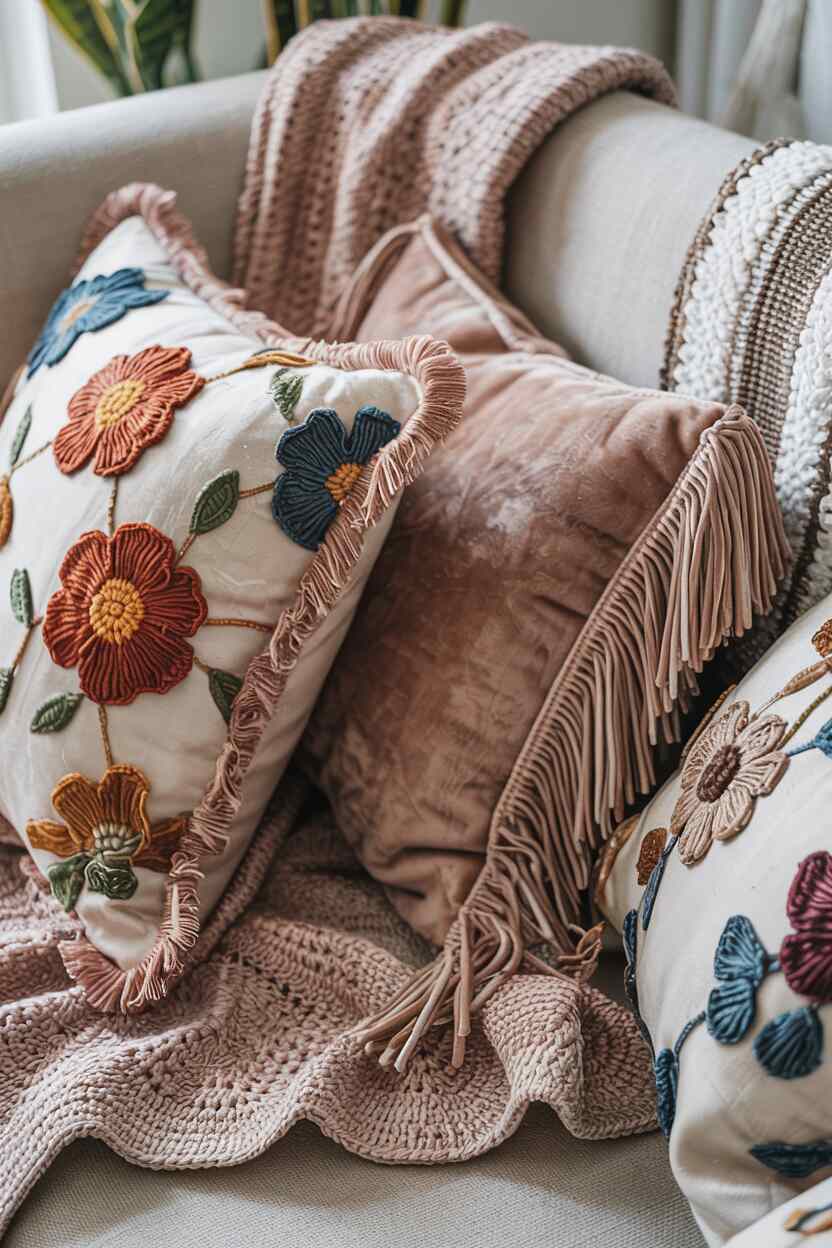
Vintage textiles commonly feature:
- Floral motifs ranging from tiny prints to bold blooms
- Geometric patterns like checks, stripes, or abstract shapes
- Damask, paisley, or bird-and-butterfly themes
- Hand-crafted elements like embroidery, crochet, or needlepoint
- Natural fibers like cotton, wool, linen, or silk
Layering various textiles creates depth and comfort in vintage spaces.
Mix patterns by varying their scale—pair small prints with larger ones while keeping them in complementary color families.
Materials and Finishes
Vintage design favors natural materials that age beautifully, developing character and patina over time.
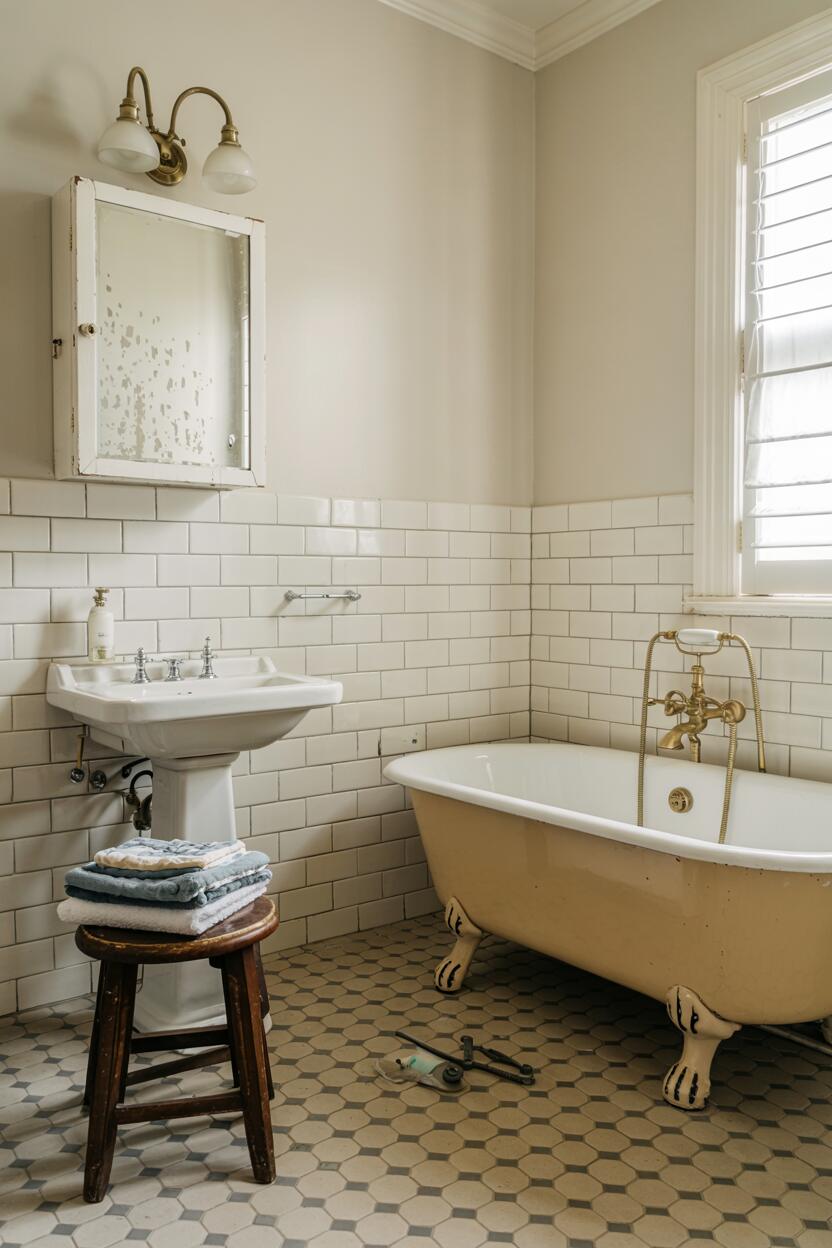
Common materials in vintage interiors include:
- Woods with visible grain patterns and natural aging
- Metals like brass, copper, or chrome with patina
- Stone such as marble or granite with minor marks from use
- Ceramic tiles in classic hexagon, penny, or subway patterns
- Glass elements from leaded windows to colored glass accents
The slight wear on these materials—a gentle patina on brass, subtle scratches on wood, or minor chips in ceramics—adds to their charm rather than detracting from it.
Creating a Vintage Interior
Mixing Eras Successfully
One of the joys of vintage style is combining elements from different periods to create a space that feels collected and personal.
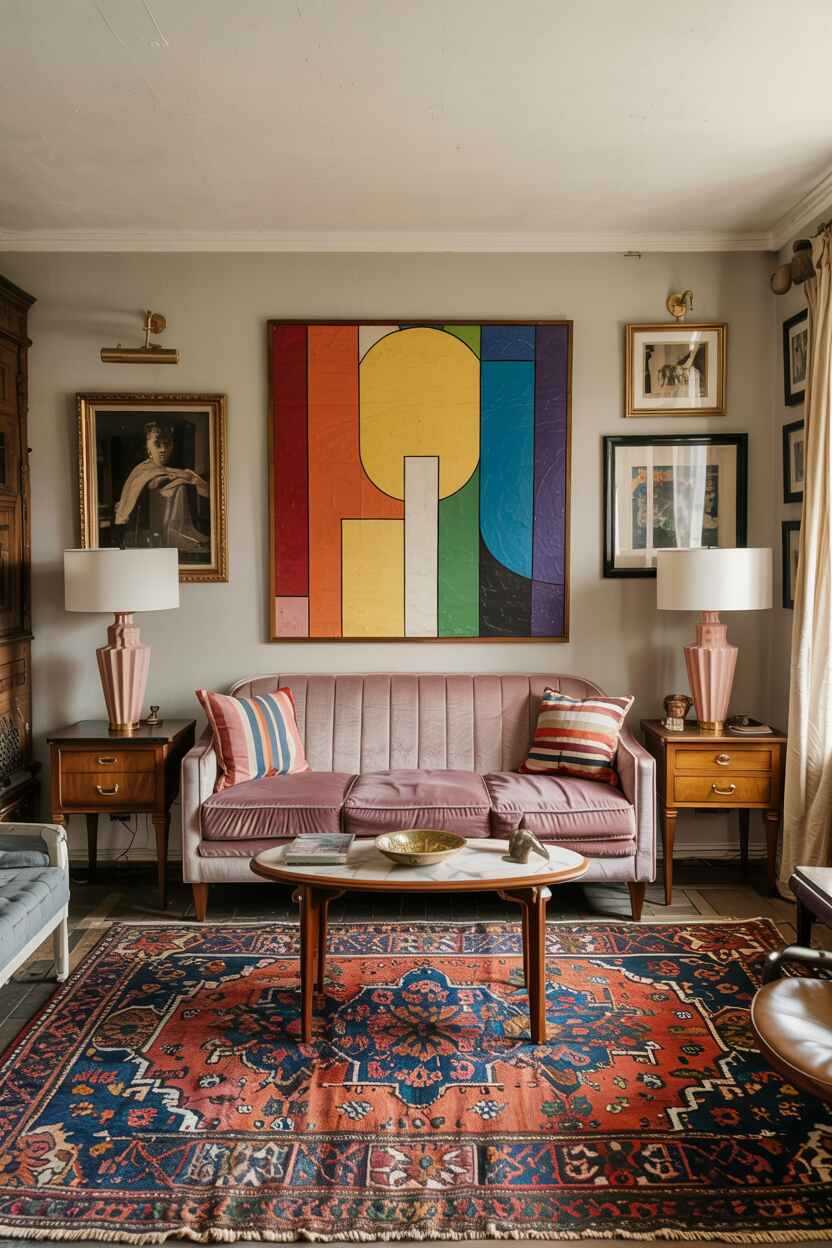
For successful mixing of eras:
- Find common elements that tie pieces together—similar wood tones or complementary colors
- Balance ornate pieces with simpler ones for visual harmony
- Use consistent textile colors to unite furniture from different periods
- Allow statement pieces room to shine by keeping surrounding items more neutral
- Look for unexpected combinations that create visual interest
The goal isn’t perfect matching but thoughtful coordination that tells a story about your personal taste and style evolution.
Finding Authentic Pieces
Sourcing genuine vintage items requires patience and a good eye, but yields unique finds with real character.
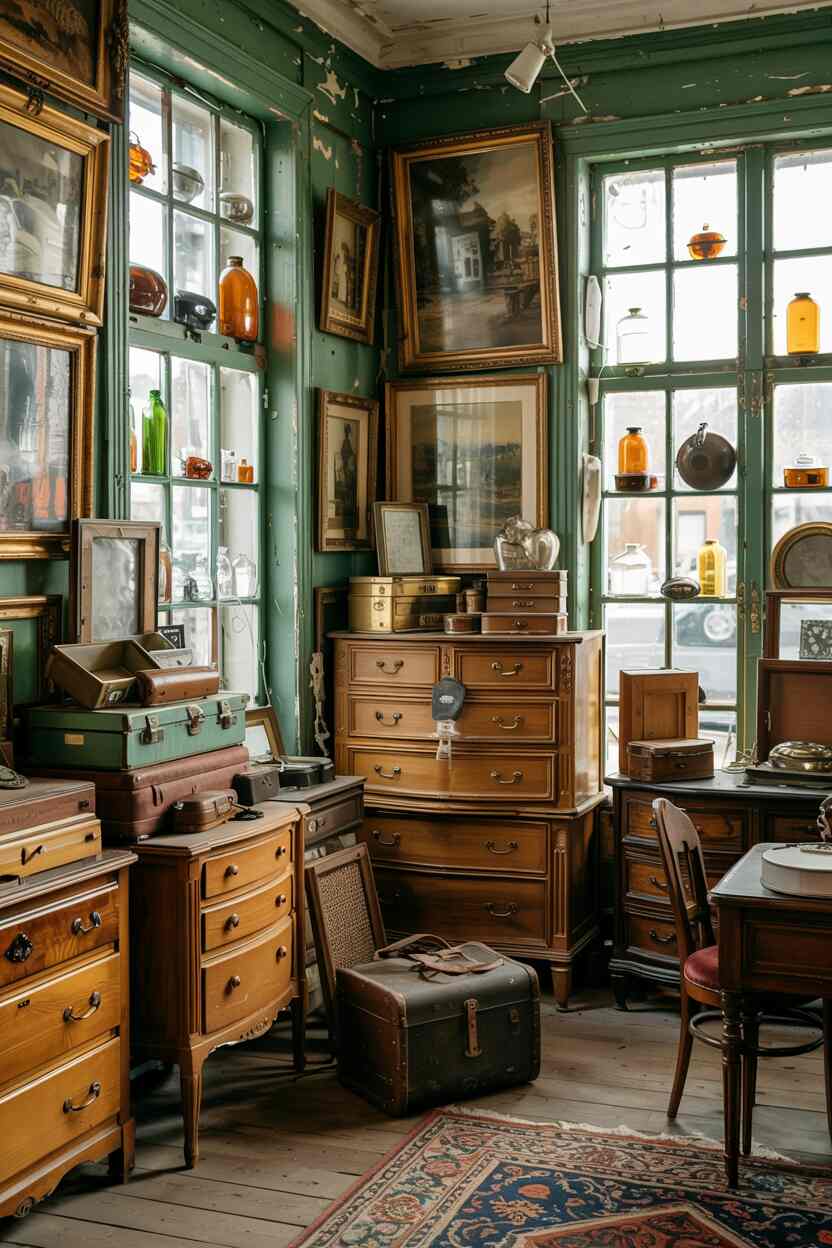
Great places to hunt for vintage treasures include:
- Estate sales in older neighborhoods
- Local antique shops and flea markets
- Online marketplaces for vintage and antique goods
- Auctions specializing in period furniture
- Family hand-me-downs with sentimental value
When searching, look beyond current condition to see the potential in pieces with good bones but cosmetic issues that can be addressed through careful cleaning or restoration.
Upcycling and Restoration
Bringing vintage pieces back to life allows you to preserve their character while making them functional for today’s living.
Basic restoration approaches include:
- Gentle cleaning with appropriate products for each material
- Minor repairs like tightening joints or replacing broken parts
- Refinishing wood surfaces while maintaining patina
- Reupholstering with period-appropriate fabrics
- Updating pieces with paint while preserving original details
The best restorations honor a piece’s history and craftsmanship while making it suitable for contemporary use.
Modern Vintage Fusion
Balancing Old and New
Modern vintage interiors blend period pieces with contemporary elements to create spaces that function for today’s lifestyles.
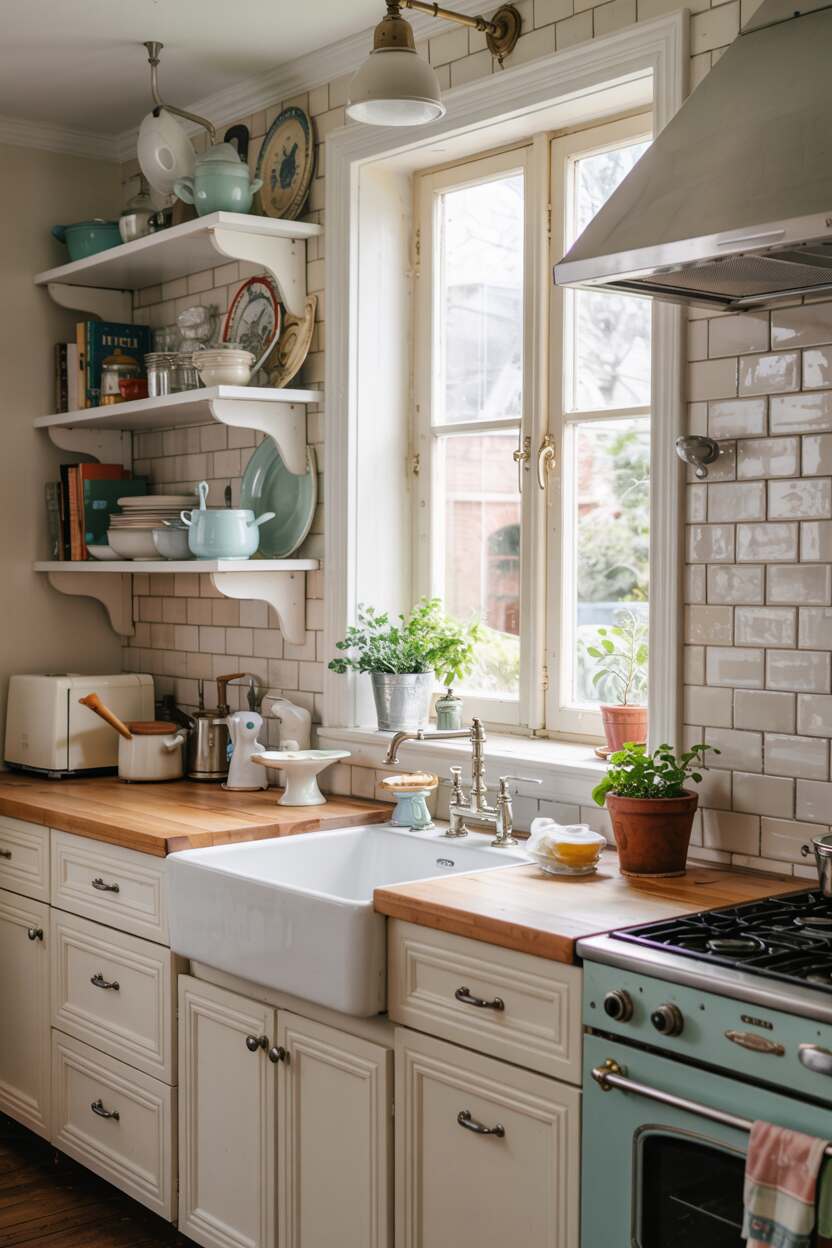
Successful vintage-modern fusion includes:
- Updated lighting to meet contemporary needs
- Modern technology housed in vintage-style cabinets or furniture
- Fresh wall colors providing clean backdrops for older pieces
- New upholstery on vintage furniture frames
- Contemporary art mixed with older pieces
This approach honors vintage aesthetics while acknowledging that we live in modern times with different needs and expectations for our homes.
Retro-Inspired New Pieces
When authentic vintage items aren’t available or practical, today’s manufacturers offer many quality reproductions.
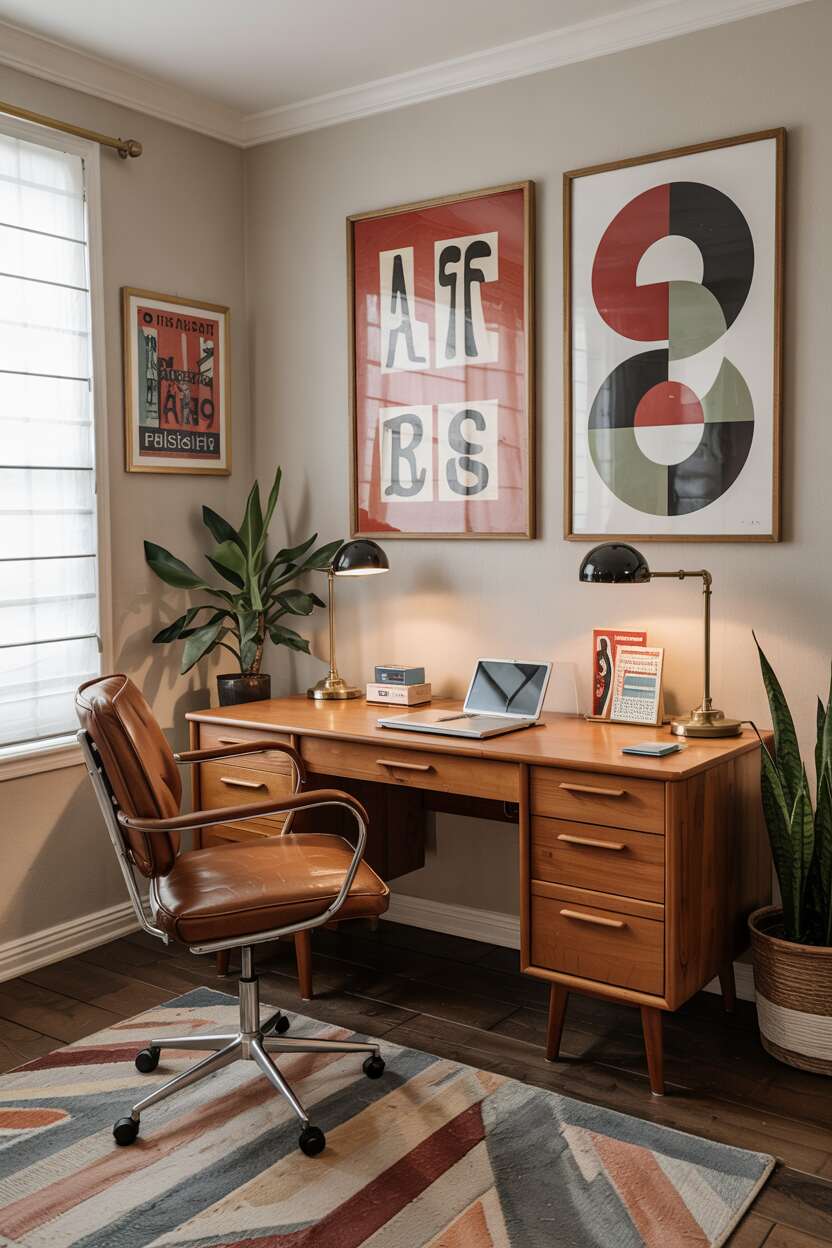
Modern vintage-inspired options include:
- Reproduction furniture with classic lines and better durability
- New lighting with vintage styling but updated wiring
- Fresh fabrics featuring classic patterns from design archives
- Contemporary appliances with retro appearances
- New rugs mimicking vintage patterns but sized for modern rooms
These pieces allow you to achieve vintage style while addressing practical concerns about size, comfort, and maintenance.
Visual Inspiration Gallery
Victorian-Inspired Elegance
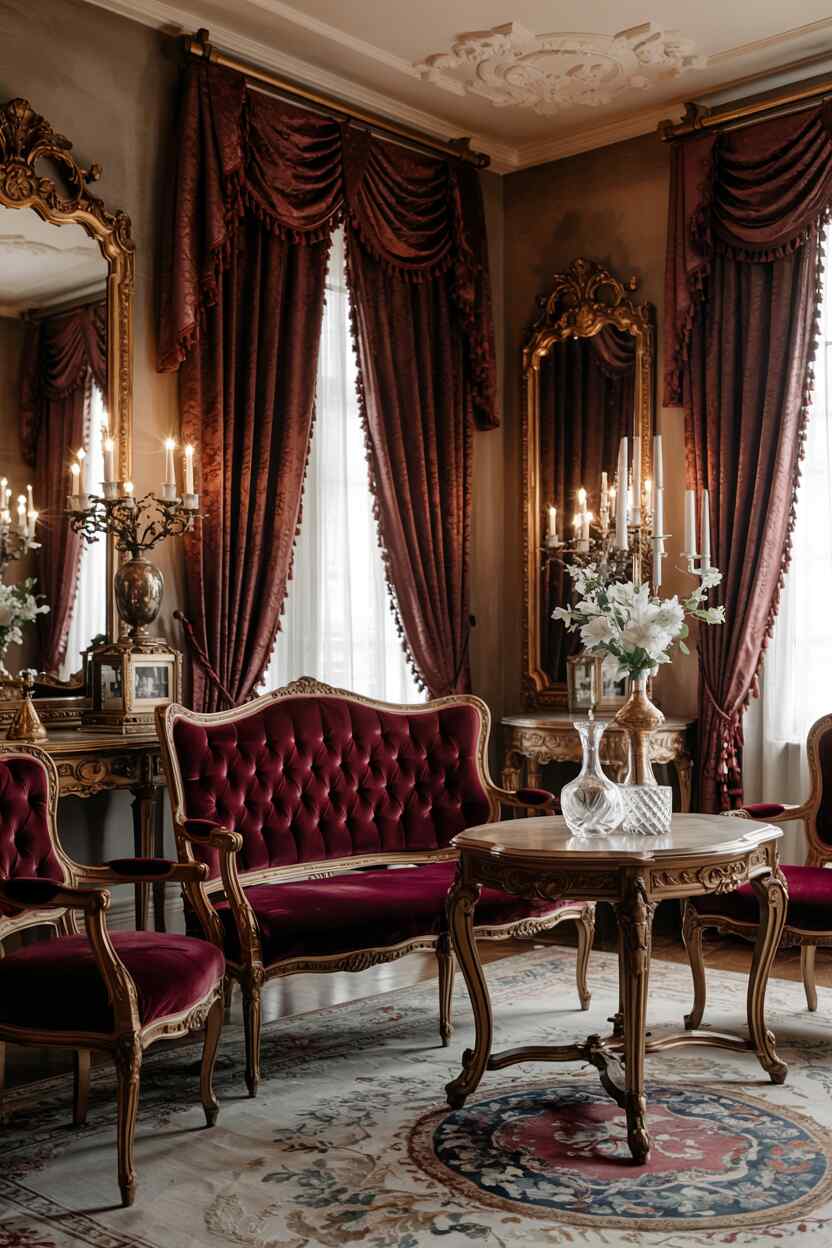
Victorian vintage style celebrates ornate details and rich materials.
This look works beautifully in older homes with architectural details like crown molding or in formal living spaces.
The layered textiles, darker woods, and decorative accessories create a sense of traditional elegance that feels collected over generations.
Mid-Century Modern Simplicity
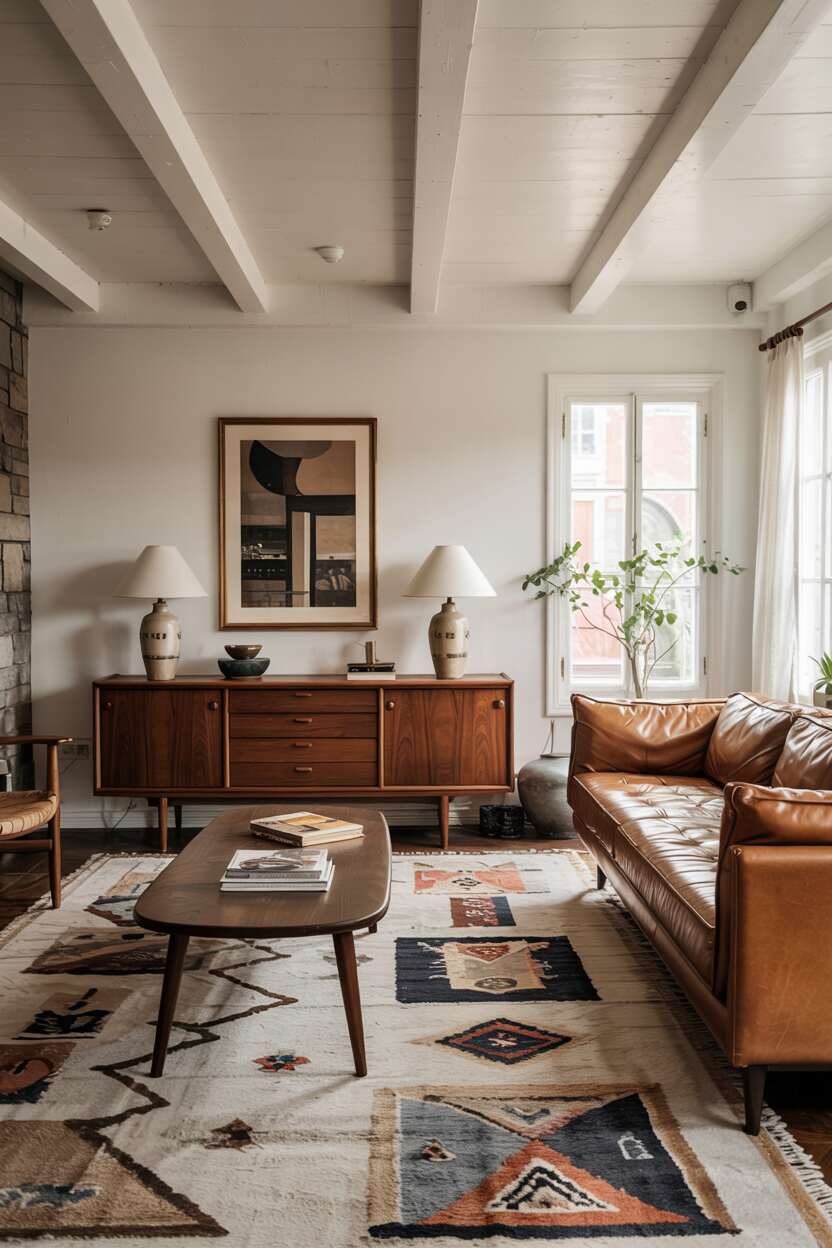
Mid-century vintage creates bright, open spaces with organic forms and mixed materials.
This style pairs perfectly with open floor plans and large windows.
The focus on functionality and clean lines makes this vintage look particularly compatible with contemporary living while still offering warmth through wood tones and textural elements.
Rustic Vintage Farmhouse
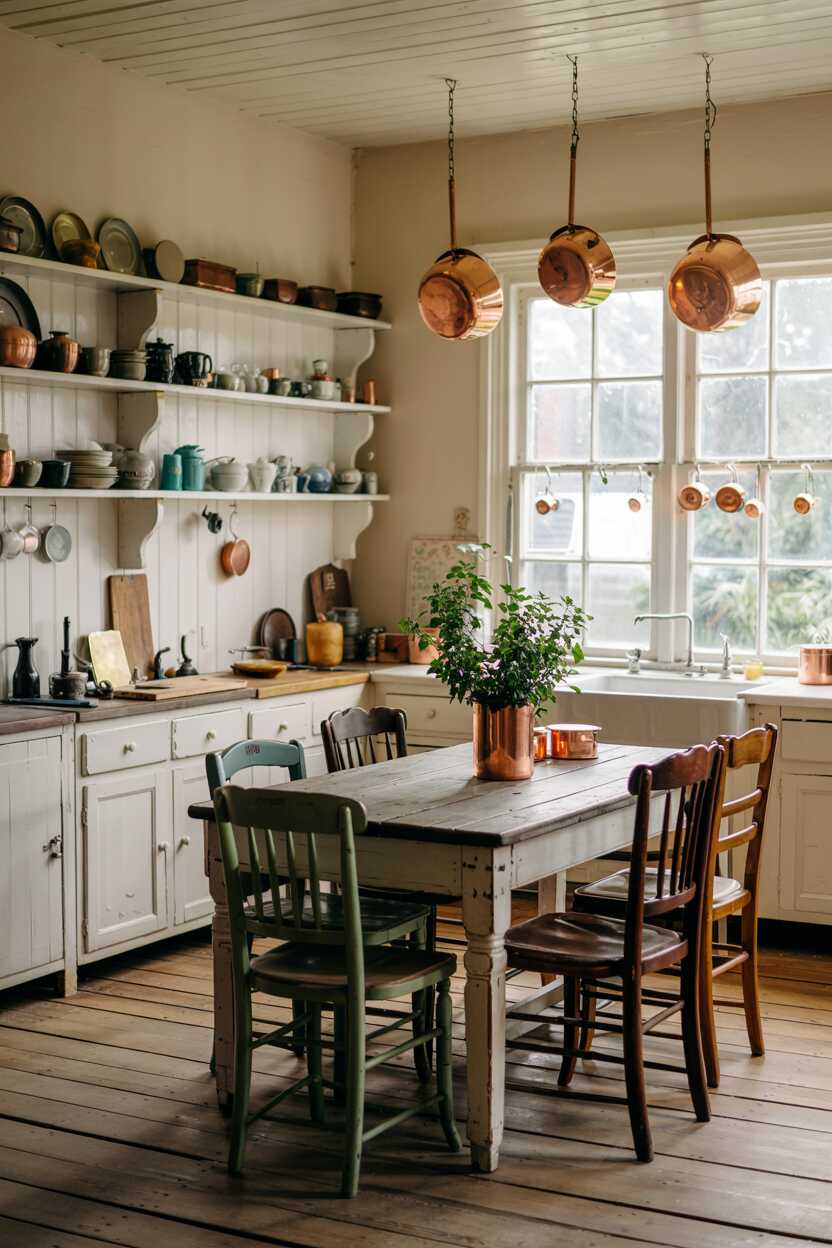
Rustic vintage combines country charm with practical, hardworking pieces.
This welcoming style works wonderfully in kitchens and dining spaces, celebrating simple materials and hand-crafted elements.
The collected look of mismatched chairs and displayed everyday items creates a casual, comfortable atmosphere perfect for gathering.
Art Deco Glamour
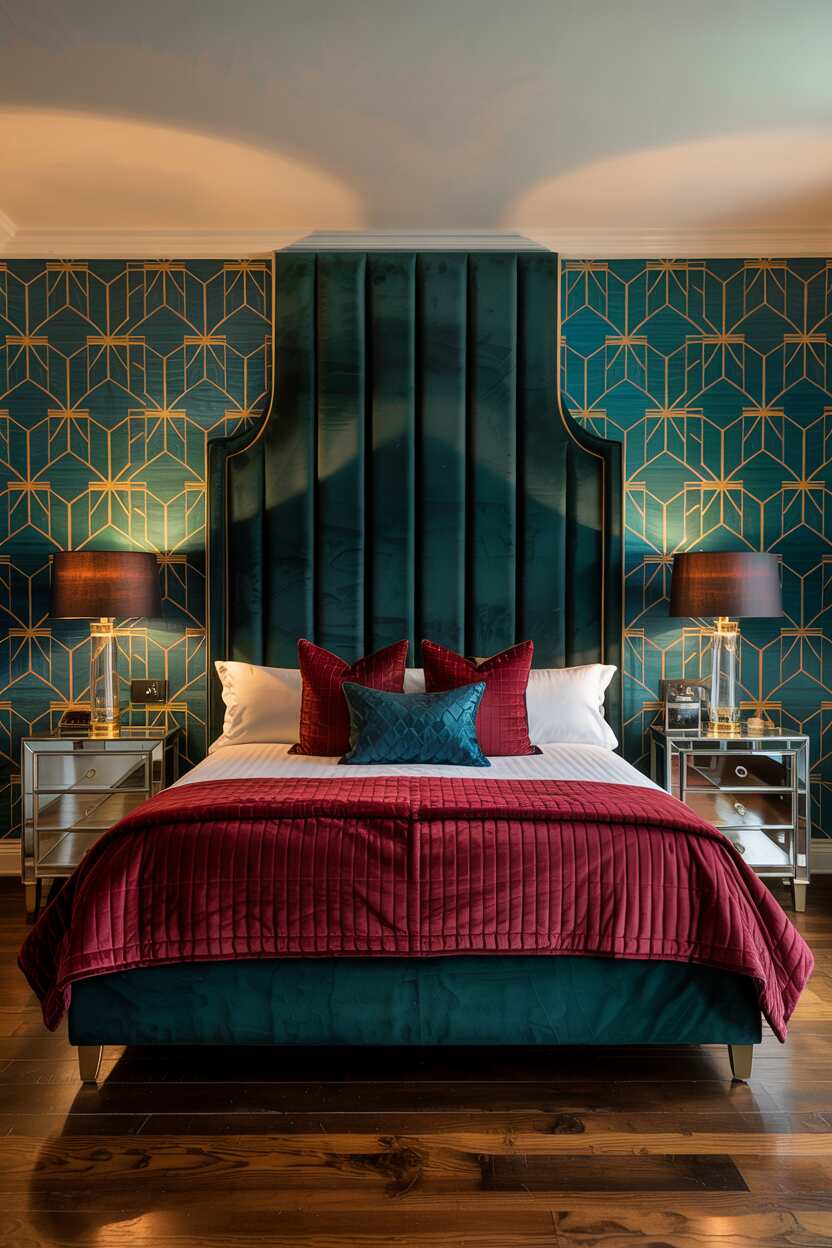
Art Deco vintage brings dramatic flair through bold patterns and luxurious materials.
This sophisticated style makes bedrooms and formal spaces feel special and curated.
The combination of geometric patterns, high-contrast colors, and reflective surfaces creates visual drama while maintaining elegant proportions.
1970s Bohemian Flair
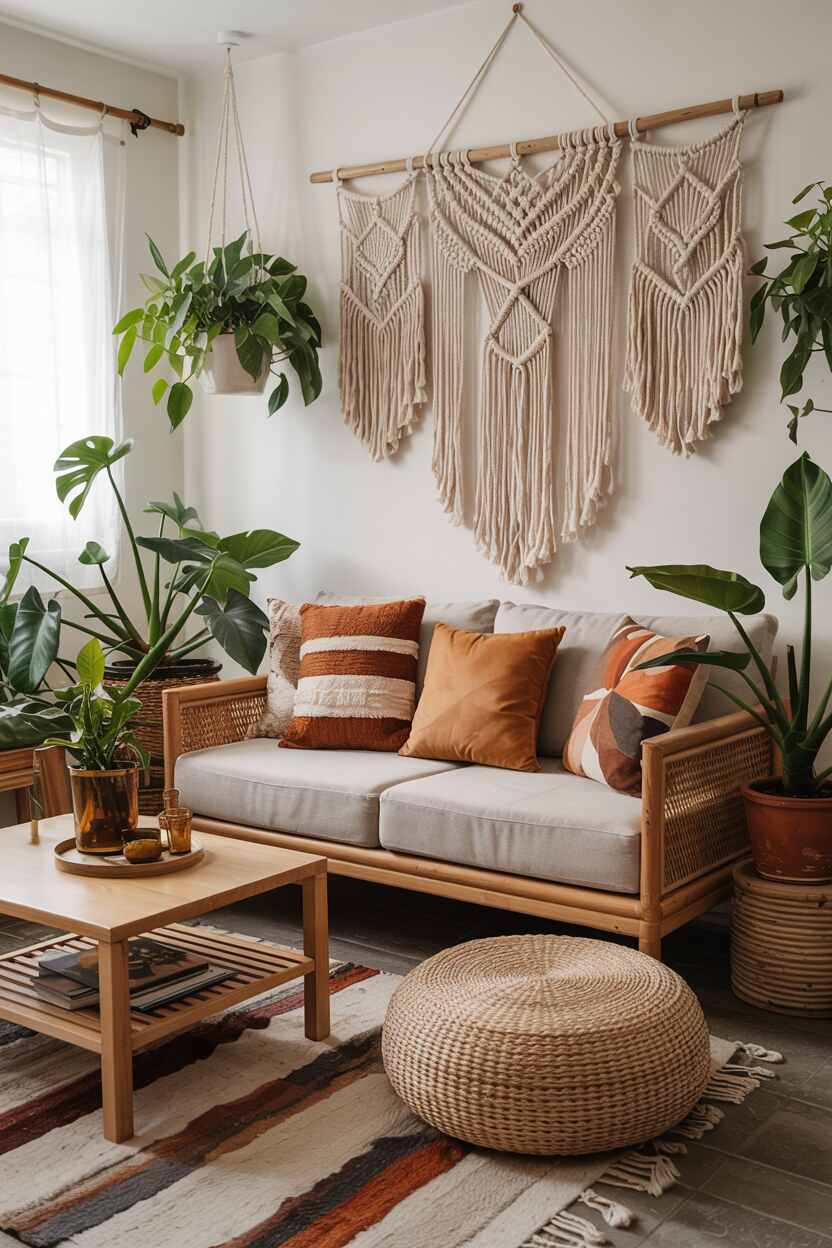
1970s vintage embraces casual comfort and natural elements with a free-spirited feel.
This look suits casual living spaces and sun-filled rooms where plants thrive.
The focus on natural materials, handcrafted details, and earthy colors creates a laid-back atmosphere that feels both nostalgic and remarkably current.
Conclusion
Vintage interior design offers a beautiful way to create homes with soul, character, and visual interest that mass-produced contemporary styles often lack.
By selecting pieces with history, quality craftsmanship, and distinctive details from various eras, you can build spaces that feel truly personal and timeless.
Whether you’re drawn to Victorian opulence, mid-century simplicity, or 1970s boho style, vintage design provides endless possibilities for creating spaces that honor the past while living comfortably in the present.

